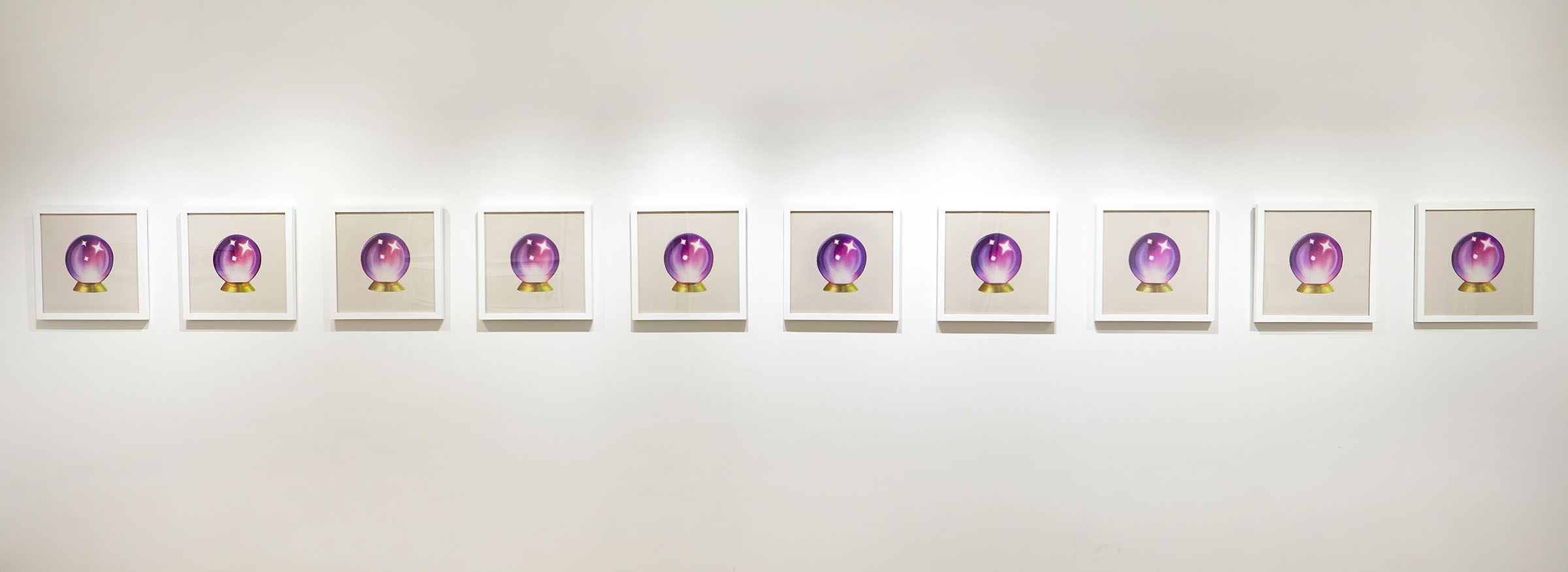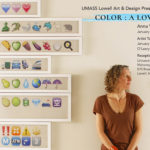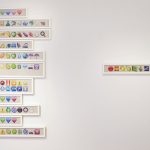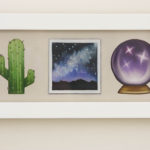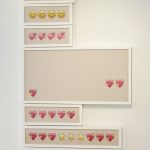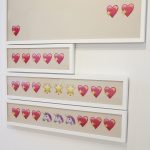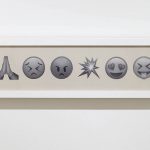Emojis annoy me. I prefer the concrete specificity of language. When my eight-year-old daughter discovered the world of emojis on her father’s phone and sent me line after line of emojis, I began to see them differently. My daughter chose emojis based solely on color, creating unique variants of a rainbow; sometimes she skipped a color or added shades of gray at the end. (She knows I love organizing things in rainbow order. Yes, it’s me the grownup who loves rainbows, not the other way around.) Emerging was an aesthetic and individualized voice. Emojis can seem silly—they are silly—and can feel like offhand gestures. But here was clarity: these were love letters, simple as that.
Interested in viewing relationships through this system of meaning we are actively shaping collectively and individually, I began making stacks of drawings, each stack representing every text including emojis received from a particular friend. (This was the early days of emojis when, for example, only seven texts from my friend Toni included emojis over the span of two years.) Leaving blank paper in place of words but the spacing of emojis the same, some drawings became studies in repetition and minimalism while others, overrun with sparkle hearts and unicorns, were a barrage of eye candy and best wishes.
As I craft these drawings, building color layer on layer until the paper is burnished to a glossy shine, intimacy suffuses these generic symbols, continuing my interest in subjectivity and the place of the self within technology and systems of expression.
And, yes, I am obsessed with the crystal ball emoji. My deliberate study of this emoji mirrors the act of gazing into a crystal ball in search of meaning. We live in a time when the future suddenly feels uncertain and more pressing. These repeated drawings act as a meditative journal entry on personal and collective futures.
Drawing the same object over and over is also an attempt to be present. Repetitive tasks fill our lives, from unloading the dishwasher, tucking our children in each night, or sewing together layers of a quilt with needle and thread. Within these boring, enriching, intimate actions is the ebb and flow of living. Drawing a red heart for the 30th time, blending Pink Rose, Scarlet Lake, and French Grey in an attempt to create the illusion of the heart’s lacquer polish, anchors me in what feels real. The emoji becomes an object, a container of my time spent drawing. That process concretizes the emotions behind the emojis—what emojis are supposed to represent, after all.
